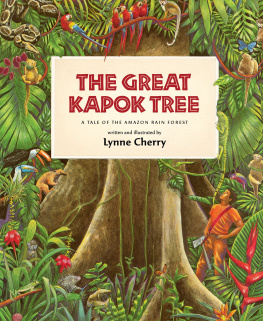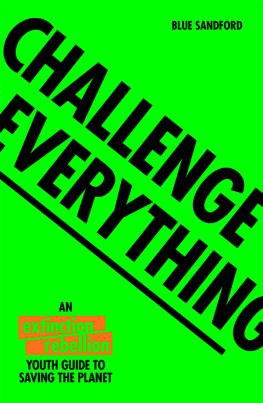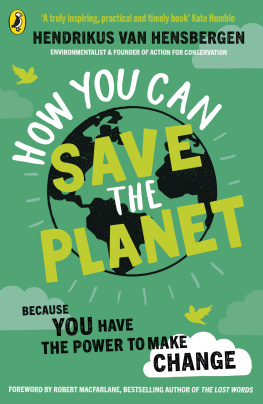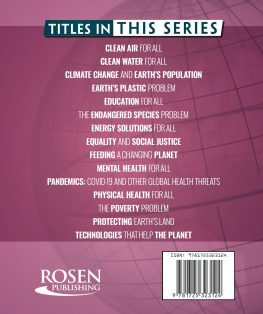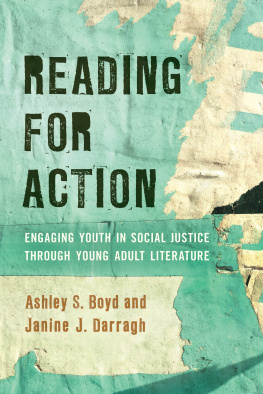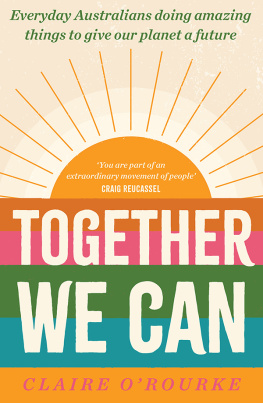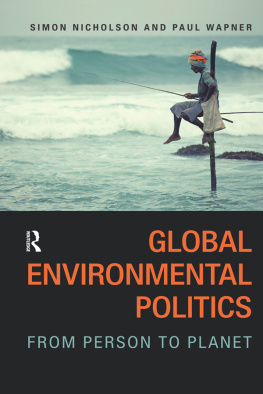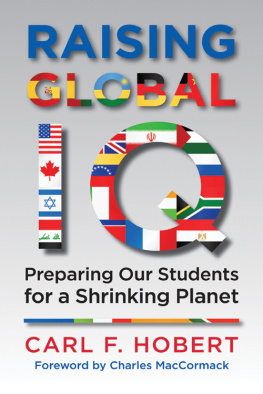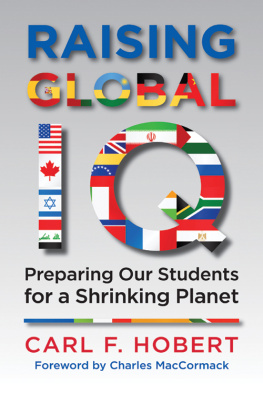


Copyright 2014 by Corwin
All rights reserved. When forms and sample documents are included, their use is authorized only by educators, local school sites, and/or noncommercial or nonprofit entities that have purchased the book. Except for that usage, no part of this book may be reproduced or utilized in any form or by any means, electronic or mechanical, including photocopying, recording, or by any information storage and retrieval system, without permission in writing from the publisher.
All trade names and trademarks recited, referenced, or reflected herein are the property of their respective owners who retain all rights thereto.
For photo credits, see the Young Voices for the Planet films at http://www.youngvoicesonclimate change.com .
Printed in the United States of America
ISBN 9781483317236
This book is printed on acid-free paper
14 15 16 17 18 10 9 8 7 6 5 4 3 2 1

FOR INFORMATION:
Corwin
A SAGE Company
2455 Teller Road
Thousand Oaks, California 91320
(800) 233-9936
www.corwin.com
SAGE Publications Ltd.
1 Olivers Yard
55 City Road
London EC1Y 1SP
United Kingdom
SAGE Publications India Pvt. Ltd.
B 1/I 1 Mohan Cooperative Industrial Area
Mathura Road, New Delhi 110 044
India
SAGE Publications Asia-Pacific Pte. Ltd.
3 Church Street
#10-04 Samsung Hub
Singapore 049483
Acquisitions Editor: Jessica Allan
Associate Editor: Kimberly Greenberg
Editorial Assistant: Cesar Reyes
Project Editor: Veronica Stapleton Hooper
Copy Editor: Judy Selhorst
Typesetter: C&M Digitals (P) Ltd.
Proofreader: Sarah J. Duffy
Indexer: Maria Sosnowski
Interior Designer: Scott Van Atta
Cover illustration: Lynne Cherry
Cover Logo and Design: Tom Lempner, Radiant Design
Marketing Strategist: Maura Sullivan
Preface
T his book is all about energythe energy we produce, the energy we use, the energy we waste as we devastate our climateand the energy of youth who hold the power to shape the future of Earth. Empowering Young Voices for the Planet supports an award-winning collection of films that document the power of young people to preserve our planet.
This book is also a guide to energy management. In it youll find ways to use the incredibly energizing stories of youth in action in your classroom and community. Youll see what can be accomplished and learn how to empower more young voices. This is a manual to help mentors and guides. Prepare to be fired up!
The films in the Young Voices for the Planet collection describe the true stories of nine youth projects. Beginning with nothing but enthusiasm, young scientist-activists have accomplished amazing things. Some of these projects started with school enrichment groups, some with clubs, and some with Scouts. Other projects began with outstanding individualstrue leaderswho saw problems and imagined solutions. Many of them had influential mentors, but the credit is all theirs. Through the films and the activities on the pages that follow you can learn about their paths to success and be inspired to find your own.
The Young Voices for the Planet films have been well received by large audiences at the United Nations, the American Museum of Natural History in New York, the Denver Museum of Nature and Science, and the annual conferences of the Association of Science-Technology Centers (ASTC), the American Bar Associations Environmental Law Conference, and the National Science Teachers Association. The films were screened at COP15 (the international climate talks in Copenhagen) and included in the prep kit for Next Generation, a program that helps students in Copenhagen develop sustainable strategies for their schools and communities. The films also toured with the Mountainfilm in Telluride and Wild & Scenic traveling film festivals. Everywhere they go, the films are making an impact.
In the introduction to this teaching guide, you will learn about the Young Voices for the Planet approach to teaching climate change. As youll see, we use an innovative pedagogical strategy incorporating several key findings from recent research as well as insights gained from the observed success of the Young Voices films. Our approach to climate change education is mindful of the psychological impact of alarming scientific information. Past approaches to climate change have engendered fear and denial by focusing too much on the disturbing truth about climate change and not enough on the positive actions students can take to prevent dread scenarios from occurring. The Young Voices program is pioneering a positive alternative that replaces fear-based instruction with action-oriented inspiration.
also features correlations to the Next Generation Science Standards (NGSS) and Common Core for each section. Lessons for the films can fall naturally into almost any systems middle-level program with plenty of possible extensions into elementary school and high school curricula.
For example, the films and activities can be used as an introduction to climate science or to an energy curriculum for upper elementary through high school. Or they can be integrated into individual lessons on science, technology, engineering, or mathematics (STEM), social studies, or environmental studies. They can also be used to teach about democracy and civic engagement. Finally, you can STEAM up your classroom by infusing the arts-based activities in this guide into STEM curricula.
describes how in-school and after-school groups can begin their own efforts to save the planet from human harm. Here youll find nitty-gritty details on planning, financing, safety, and liability.
We hope that you will use the films along with the action guide to start a project in your own community of learners. Were confident that once you allow your students to open up their experience and imagination, they can take the lead. So you may want to let your students choose whether they would like to replicate one or more of the projects in the Young Voices for the Planet films or develop their own projects for reducing carbon dioxide (CO2) emissions. The possibilities are endless. You might set up a community screening of the films followed by a presentation of the students CO2-reduction projects. Or show the films to inspire members of the larger school community as to what might be possible. The films are great for theatrical as well as classroom screenings. Shown back-to-back all together or individually, they can be used as an introduction to your own action science efforts. Often, youth inspire their communities when they speak after screenings at film festivalsor at such venues as landmark movie theaters or local multiplexesand share information about their science and service projects.
So dont hesitate to encourage such efforts in your school and community. Youth activism doesnt have to be highly political. Students dont need to take sides or associate themselves with a partisan movement. In the best tradition of a democratic society, students can look at different sides of an issue, do scientific research, work together, and use creative thinking to help solve serious environmental and societal problems.
Next page

